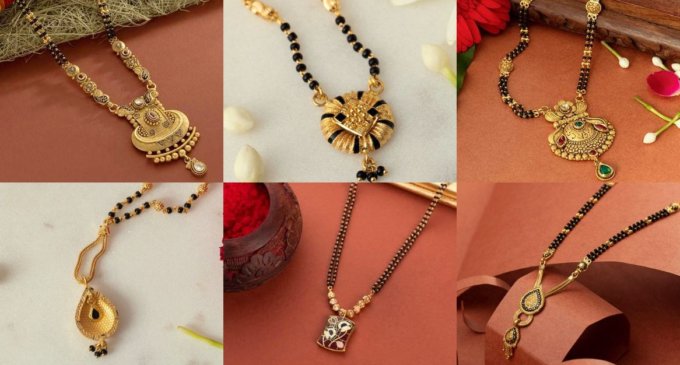Hindu marriage represents the union of two people as well as their shared devotion to one another. The mangalsutra, toe rings, kumkum, bangles, and a nose ring are the five symbols of a woman’s marital status in Hindu culture.
The significance and varieties of mangalsutra in various civilizations are covered in this article. You and your pals may have even discussed the mangalsutra’s significance. Let’s examine this jewel’s importance by a diamond jewellery shop in Noida-
Mangalsutra for modern women in the 21st century
Many women no longer stays at home and devote their full time to taking care of the household. Women do pursue professional professions, and they are required to stay up with their environments on a global scale. The mangalsutra is very significant and important in the life of a married woman. However, the style could not go well with contemporary clothing. Women no longer regularly wear it as a result and prefers the latest diamond mangalsutra designs.
Maharashtrian Mangalsutra (Vati Mangalsutra)
It consists of two bowl-shaped vatis attached to a black beaded chain. Shiva and Shakti are symbolised by the gold vati. The husband and wife are represented by the two strands of beads fused together. Black beads are said to ward off bad luck and ensure a joyful marriage. Black beads come in two varieties called “Nirgun” and “Shagun.” A Nirgun is a necklace made entirely of black beads. A Shagun when there are two gold beads between each row of nine back beads.
Kerala Mangalsutra (Minnu)
The Hindus in Kerala refer to the mangalsutra as “Thaali,” while the Christians refer to it as “Minnu.” Every bride who is Christian has a Minnu. It is a pendant with a cross, a representation of Christianity, on a heart-shaped gold medallion. The heart represents the idea of love. The relationship that a husband and wife must maintain is symbolized by the cross. The similar bond exists between Jesus and the church, which is his bride. The cross is made up of five or seven gold dots.
Tamil Mangalsutra (Thaali Kodi)
The wedding band represents commitment, unity, and respect for one another, same as the Tamil mangalsutra or thaali is the emblematic symbol of a Hindu marriage. The ceremony known as “Mangala Dharanam” occurs when the groom dresses his bride in a Thaali. Additional names for it include Thirumangalayam, Mangalyam, Thaaly, and Kodi.
Bihari Mangalsutra (Taagpaag)
Married women in the Bihari tradition don a mangalsutra called Taagpaag. As a sign of their marriage, women also adorn their toes with “bichwa” toe rings. Indian tradition includes the wearing of toe rings. They are thought to be necessary for the female reproductive system. In essence, it is a different term for mangalsutra. It is a black beaded chain with their preferred pendant.
Sindhi Mangalsutra
Mangalsutra plays a significant role in Sindhi wedding culture. The necklace has a pendant and is made of black and gold beads. The bride and groom’s preferences will determine the mangalsutra style. Today’s brides prefer a more contemporary style with the thought that they can wear it frequently.
Kashmiri Mangalsutra (Dijhor, Dejhooor)
The mangalsutra worn by Kashmiri brides is highly intriguing. Actually, they are gold earrings that have been braided with simple red thread. During the wedding ceremony, the bride from Kashmir receives the earrings from her parents. The crimson thread is replaced with a gold chain when she visits her husband’s home following the wedding. “Aath” is the name of the chain that her in-laws gave her.
Gujarati Mangalsutra
The Gujarati brides’ nose studs serve as a symbol of their marital status. Gujaratis typically wear a black mangalsutra with a complex gold pendant. Nowadays, the majority of people choose a diamond pendant on a short chain.
Some Of The Famous Diamond Jewellery Brands in India To Shop

Yes, this is a good post without any doubts. You really doing a great Job. I inspired from you. So keep it up!!
you are welcome Gal
Amazing post.. just keep up the good work!
You are welcome siya
Top ,.. I will save your website !
You are always Welcome Gal Straman
Hm,.. amazing post ,.. just keep the good work on!
Thank you Jan Siker, for reading this blog
Good post. I learn something totally new and challenging on websites I stumbleupon on a daily basis. It will always be useful to read articles from other writers and practice something from other web sites.
Thank you Evil Pager, for sharing your ideas about post.
I read this post your post so nice and very informative post thanks for sharing this post
Thank you Muskan, for sharing valuable information with us.